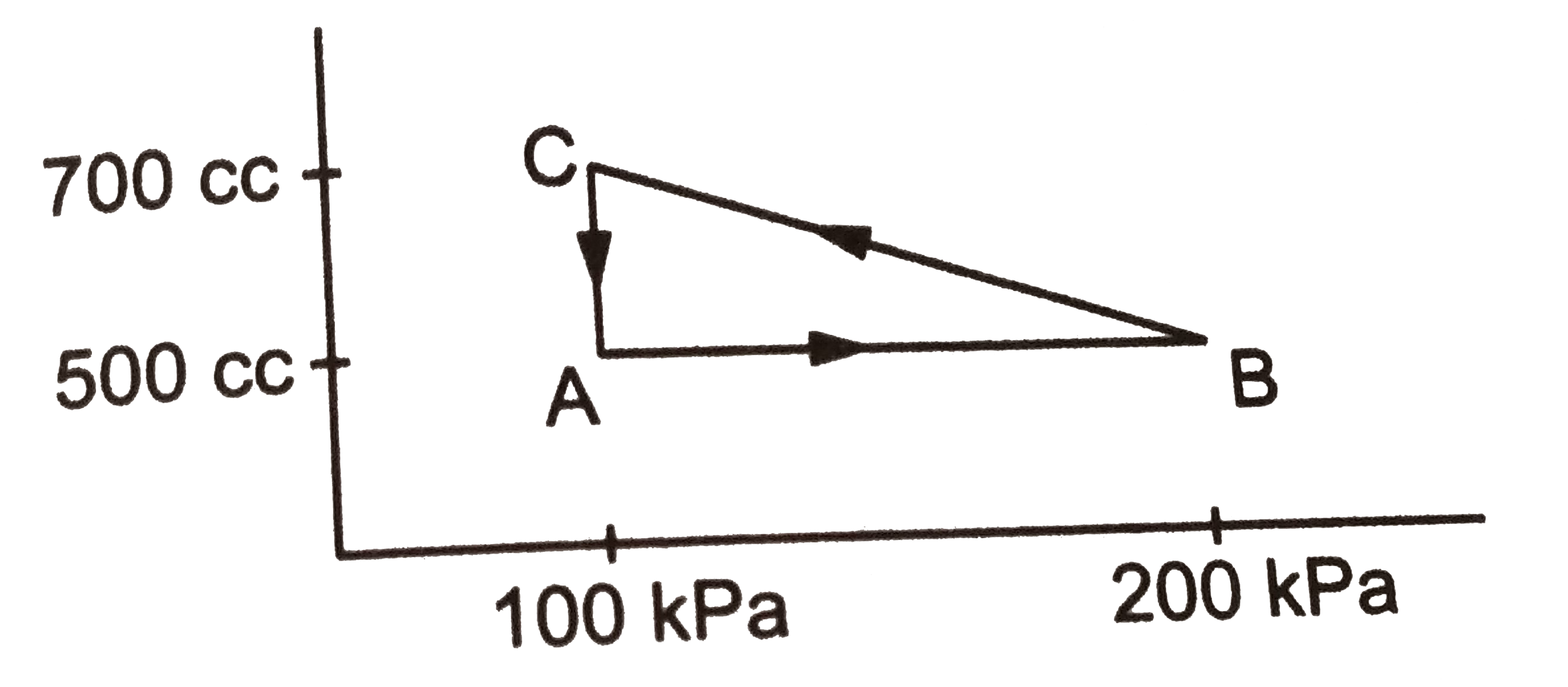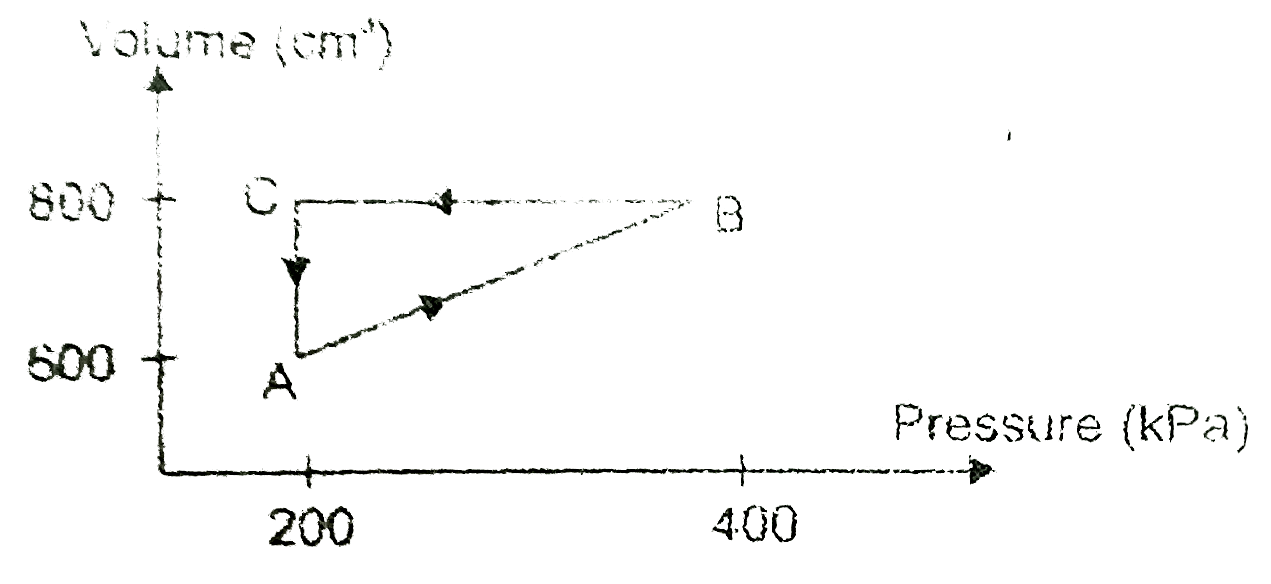An ideal gas is taken through a cyclic thermodynamical process through four steps. The amounts of heat involved in these steps areQ1=5960J,Q2=−5585J,Q3=−2980J,Q4=3645J, respectively . The corresponding works involved are W1=2200J,W2=−825J,W3=−1100J,W4 respectively. The value of W4 is
Since W2 and W3 are negative,its means that the work is done on the gas.HenceQ2and Q3are negative which implies that heat is evolved in processes 2 and 3. Since Q1 and Q4 are positive,heat is absorbed by the gas in processes 1 and 4. As (Q1+Q4) is greater than (Q2+Q3), the gas absorbs a net amount of heat energyina complete cycle, whcih is given by
ΔQ=Q1+Q2+Q3+Q4
=5960−5585−2980+3645=1040 joule
The net worl done by the gas is
ΔW=W1+W2+W2+W4
=2200−825−1100+W4=(275+W4) joule
Since the process is cyclic, the change in internal energyΔU=0.From the first law of thermodynamics, we have
ΔW=ΔQ−ΔU=ΔQ
or275+W4=1040 or W4=1040−275=765J
b. Efficiencty of the cycle is defined as
η=net work done by the gastotal heat absorbed by the gas
=ΔWQ1+Q4=275+7655960+3645=10409605=0.1083=10.83%
Similar Questions
An ideal gas is taken through a cyclic thermodynamic process through four steps. The amounts of heat involved in these steps are Q1=5960J,Q2=−5585J,Q3=−2980JandQ4=3645J, respectively. The corresponding quantities of work involved are W1=2200J,W2=−825J,W3=−1100JandW4 respectively.
(1) Find the value of W4.
(2) What is the efficiency of the cycle
View SolutionAn ideal gas is taken through a cyclic thermodynamic process through four steps. The amounts of heat involved in these steps are Q1=5960J,Q2=−5585J,Q3=−2980JandQ4=3645J, respectively. The corresponding quantities of work involved are W1=2200J,W2=−825J,W3=−1100JandW4 respectively.
(1) Find the value of W4.
(2) What is the efficiency of the cycle
View SolutionAn ideal gas is taken through a cyclic thermodynamic process through four steps. The amounts of heat involved in these steps are Q1=5960J, Q2=−5585J, Q3=−2980J and Q4=3645J respectively. The corresponding quantities of work involved are W1=2200J, W2=−825J, W3=−1100J and W4 respectively.
(a) Find the value of W4.
(b) What is the efficiency of the cycle?
View SolutionAn ideal gas is taken through a cyclic thermodynamics process through four steps. The amount of heat given to the system in these steps are Q1=1000J, Q2=−800J, Q3=450J, Q4=−200J respectively. The efficiency of cycle is nearly
View SolutionA gas is taken through a cyclic process ABCA as shown in, if 2.4 cal of heat is given in the process, what is the value of J ?

View SolutionA gas is taken through a cyclic process ABCA as shown in, if 2.4cal of heat is given in the process, what is the value of J ?

View SolutionA cyclic process contains four steps AB,BC,CD and DA. Heat involved in different processes is given as QAB=+200J,QBC=+600J,QCD=−300J,QDA=0, then efficiency of process is
View SolutionDuring an isobaric heating process the work done by oxygen gas is 4 J. Calculate the amount of heat transferred to the gas. [γ=1.4]
View SolutionEfficiency of cyclic process is 50% if heat Q1=1915J , Q2=−40J , Q3=125J, then Q4 is unknown then find the value of Q4.
View SolutionIn given figure, An ideal gas a gas is taken through a cyclic process ABCA, calculate the value of meachanical equilvalent of heat (J) when 4.8cal of heat is given in the process?

View Solution